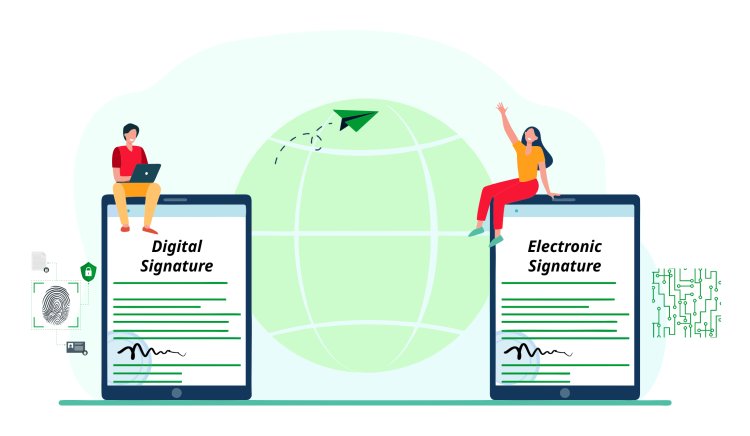Difference between Electronic Signature and Digital Signature
Electronic Signature: A general term for any electronic process indicating approval or acceptance of a document, but with limited security and authentication. Digital Signature: A specific type of electronic signature that uses cryptographic techniques to ensure the signer's identity, data integrity, and non-repudiation, offering higher security and legal validity.
Share this Post to earn Money ( Upto ₹100 per 1000 Views )

Electronic signature and digital signature are two different concepts related to verifying the authenticity and integrity of electronic documents or messages. While they both serve the purpose of signing electronically, they use distinct technologies and offer different levels of security.
1. Electronic Signature: An electronic signature, often abbreviated as "e-signature," is a broad term that encompasses any electronic process indicating acceptance or approval of a document or data. It can be as simple as a scanned image of a handwritten signature or a tick mark in a checkbox. Electronic signatures are commonly used in various online transactions, such as signing contracts, agreements, or consent forms.
Key features of electronic signatures:
Simplicity: Electronic signatures can be as basic as a scanned image or an electronic mark, making them easy to use and implement.
Authentication: They may not always provide strong authentication or proof of the signer's identity.
Security: While electronic signatures offer some level of security and tamper-evident features, they are generally considered less secure than digital signatures.
Legality: In many jurisdictions, electronic signatures are legally recognized, especially for routine transactions and non-sensitive documents.
2. Digital Signature: A digital signature is a specific type of electronic signature that provides a higher level of security and authenticity. It is based on cryptographic techniques and ensures the integrity of the signed data, as well as the identity of the signer. Digital signatures use public-key infrastructure (PKI) to encrypt the signature and ensure non-repudiation, meaning the signer cannot later deny having signed the document.
Key features of digital signatures:
Strong Authentication: Digital signatures require the use of a unique private key that belongs to the signer, providing a higher level of authentication and ensuring that the signature cannot be forged.
Data Integrity: Digital signatures create a hash (a unique string of characters) of the document, which is encrypted using the signer's private key. Any modification to the document after signing will result in a different hash, and the signature will be invalidated.
Non-Repudiation: Digital signatures provide evidence that the signer cannot deny their association with the signed document, making them legally more robust and suitable for sensitive transactions.
Higher Security: The cryptographic nature of digital signatures makes them more secure against tampering and unauthorized access.
In summary, an electronic signature is a general term that encompasses any electronic representation of a signature, while a digital signature is a specific type of electronic signature that uses cryptographic techniques to ensure authentication, data integrity, and non-repudiation. Digital signatures offer a higher level of security and are more suitable for situations where strong authentication and legal validity are required.

 marketing team
marketing team 





